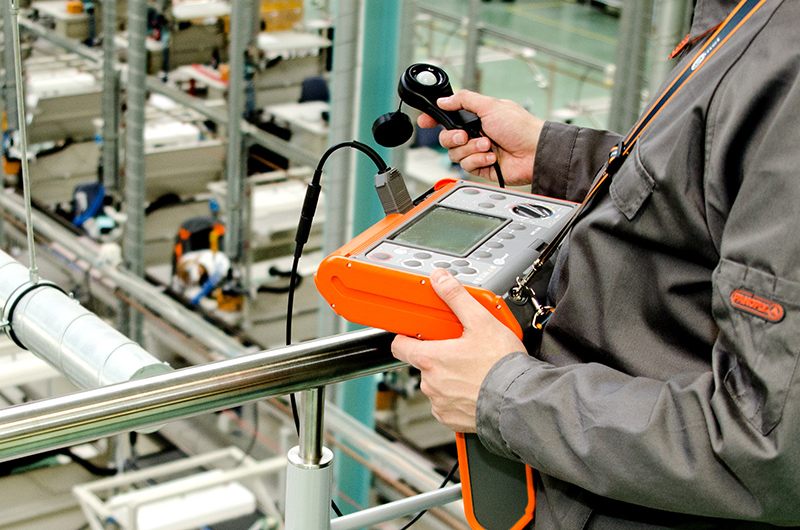
LED illuminance measurements by using Sonel LXP light meters
No clear requirements have been specified for the measurement of LED light sources in applicable standards. However, it should be noted that the greater the difference between the sensitivity curve of the light meter photometric head and the required one, the more the obtained results are dependent on the spectral characteristic of the radiation being measured. Due to its parameters, Sonel light meters of classes A and B work extremely well when performing LED illuminance measurements.
If there is insufficient lighting or a lack of natural light, it is necessary to use artificial light. Thus, the need arises to control illuminance parameters with a light meter. The necessity to perform such measurements results not only from the needs of lighting manufacturers or designers, but also results from legal regulations and local regulations (e.g. GB 50034, JIES-008, CIE S 008/E-2001, SNiP 23-05-95, AS 1680.1-2006). These regulations mean that employers are obliged to perform measurements and lighting quality assessment in the working environment. Therefore, the employer is required to provide adequate electrical lighting in the workplace according to EN 12464-1:2012.
Light meter calibration
The basic quantity to be assessed is the illuminance of electrical lighting measured with a light meter calibrated in lux units. Calibrating the light meter at an accredited laboratory to ensure that calibration is carried out according to ISO/IEC 17025:2018 is highly recommended. Correct light meter indications are guaranteed by the calibration certificate which indicates measurement uncertainty. In addition, light meters must meet the requirements specified in: Publication CIE 69-1987. To calibrate light meters, standard incandescent lamp illuminants (colour temperature Tc = 2856 K) are used.

Fig. 1. Sonel LXP-2 light meter (luxmeter)
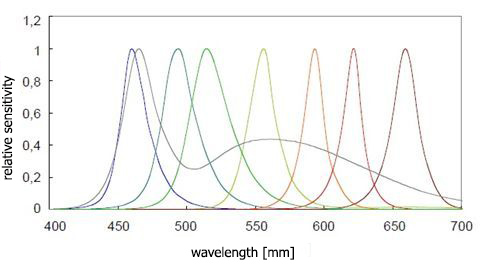
Fig. 2. Relative spectral distributions of the radiant power of typical LEDs
Photometric head correction
One of the most important issues related to light meter settings are the spectral and spatial corrections of its photometric head. The device should have such spectral sensitivity as the standard colorimetric sensitivity of relative spectral sensitivity of the human eye V(λ) and the meter output signal should vary as the cosine of the angle of incidence of light into its measurement plane. The measuring head contains
a silicon-based photoelectric detector (Sonel luxmeters). The detectors’ spectral sensitivity differs from the required spectral sensitivity for luxmeters set forth by the International Commission on Illumination (CIE). Therefore, spectral correction filters and dispersing elements are used to ensure the consistency of its indications with the cosine of the angle of incidence of light.
Measuring accuracy
Another important luxmeter parameter is the error value in the spectral correction f1’ (a measure of mismatch between luxmeter spectral sensitivity and the V(λ) function, and the f1 error resulting from the difference in spectral distributions of the measured and calibration sources. Luxmeters are divided into four classes depending on their accuracy. The highest accuracy (class L) with an f1’ error not exceeding 1.5%, is offered by laboratory luxmeters. The devices within the range of 1.5%<f1’<3% belong to class A which offer very good quality (Sonel LXP-10A). Medium-quality luxmeters with a range of 3%<f1’<6% represent class B (Sonel LXP-10B, LXP-2). Measuring devices with f1’ greater than 6% but smaller than 9% are considered low-quality luxmeters (class C).
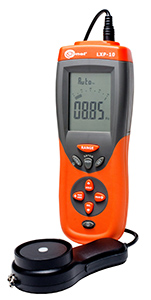
Fig. 3. Sonel LXP-10 light meter (luxmeter)
LED illuminance measurement
At present, with the dynamic development of lighting technology, incandescent lamps, due to their low luminous efficiency, are being replaced by more efficient LEDs. The working principle of LEDs is based on an optical phenomenon called electroluminescence in solids. The basic advantages of light-emitting diodes include a low input current, low supply voltage, high efficiency, small sizes, high durability and high luminance. Due to the different light generation mechanism in LEDs, some doubts arose as to whether they could be used in illuminance measurements with various types of luxmeters.
There are no clearly specified standards governing LED light measurements in Polish law. The report issued by the International Commission on Illumination in 2007 is the only one to contain recommendations considering LED lighting testing, while dividing emitted light into white and colour [CIE-127:2007]. Spectral distributions of light emitted by LEDs differ from that used for luxmeter calibration (Fig. 3). The International Commission on Illumination (CIE) indicated this difference as the f1 error.
The f1 error
The value of the f1 error resulting from the mismatch between the measured light source and the standard light used for luxmeter calibration depends on the degree of fit of photocell spectral sensitivity to V(λ), as well as spectral distributions of measured radiant power. Thus, to obtain the correct value of illuminance measurement Er, luxmeter indications EZ should be multiplied by correction factors k (1):

Based on available information, the values of the correction factor have been determined for luxmeters. These values are close to 1.
Led illuminance measurements by using Sonel light meters
Sonel offers light meters from both A and B classes. The higher the meter class, the lower the illuminance values which can be measured. When choosing an illuminance meter, the conditions of use and parameters to be measured should be taken into consideration. If white light emitted by LEDs is to be measured, CIE recommendations should be taken into account, namely a luxmeter with the f1’ parameter representing the mismatch value between luxmeter sensitivity and the V(λ) curve not exceeding 3%, should be used. Sonel LXP-10A Class A light meter meets this requirement. Thus, it is very well suited to measure light emitted by white LEDs. However, for Sonel LXP-10B and Sonel LXP-2 Class B light meters with the declared value of f1’ < 6%, the value of f1 representing the differences in the spectral distribution of the measured and standard sources should also be taken into account. Since for luxmeters of classes A and B, the correction factors k (1) are close to 1 (k ~ 1), they therefore have no significant effect on the measured value of illuminance.

Fig. 4. Measurement with the Sonel LXP-10 light meter (luxmeter)
Summary
Sonel light meters classified in Classes A and B allow accurate LED illuminance measurements. It should be noted that the meter used for measuring should have a valid calibration certificate confirming instrument performance and compliance with the declared levels of spectral and basic uncertainties. The lower spectral and total uncertainties, the closer the measurement result is to the actual value.
Author: Dorota Kołakowska, Sonel S.A.
Products mentioned in the article:



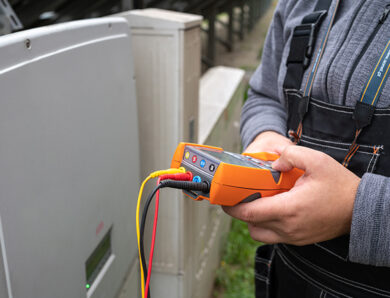
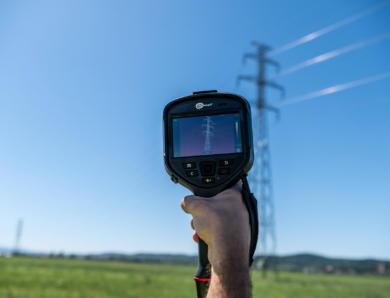
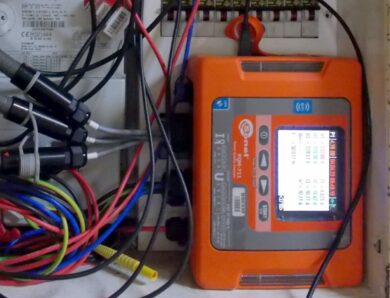
No Comment